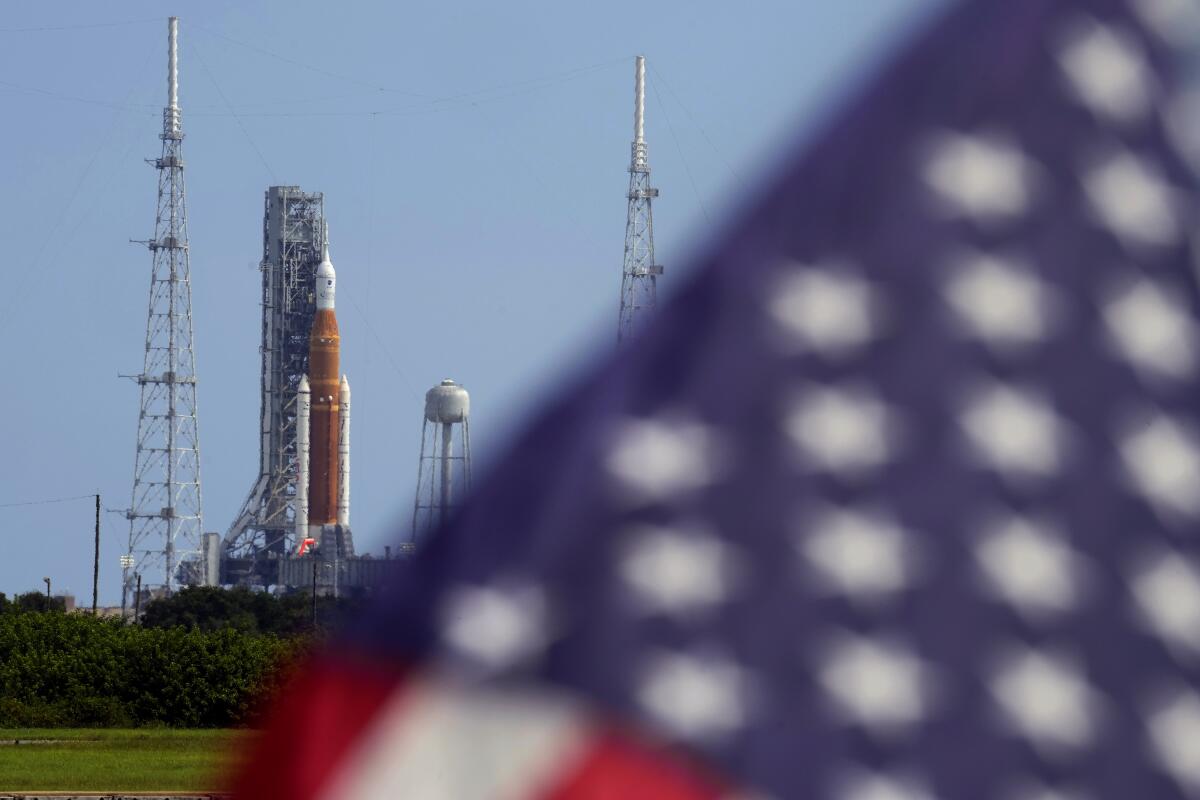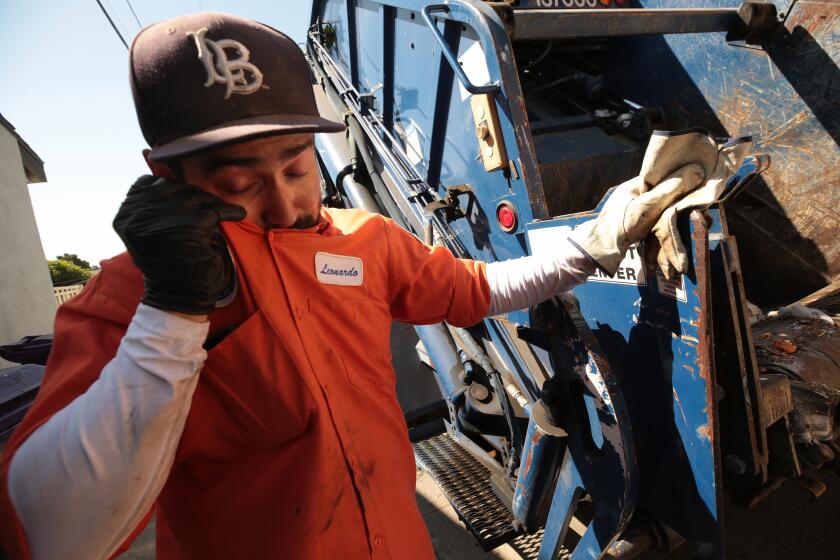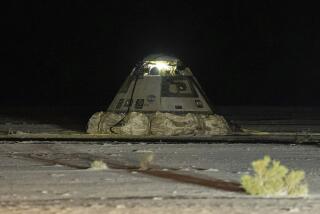NASA’s return to the moon is delayed again after scrub because of fuel leak

Second time was not the charm for the first launch of NASA’s towering moon rocket.
A leak in the rocket’s core stage liquid hydrogen fuel line prevented NASA from launching its Space Launch System rocket and Orion capsule Saturday on an uncrewed mission around the moon. The launch was set for 11:17 a.m. Pacific time from Kennedy Space Center in Florida, but ground teams discovered the leak hours earlier when the rocket was being fueled for liftoff.
After trying several measures to mitigate the leak, launch director Charlie Blackwell-Thompson called off the launch around 8:18 a.m. Pacific time.
NASA will not be able to launch again before Tuesday. Engineers will discuss future launch options next week. NASA officials told reporters after the scrub that the liquid hydrogen leak was “large” and that it was too early to tell why the leak was not present during Monday’s launch attempt, which was also scrubbed.
“We’ll go when it’s ready. We don’t go until then,” NASA Administrator Bill Nelson said during an interview on the agency’s NASA TV. “Especially now, on a test flight, because we’re going to stress this and test it and test that heat shield and make sure it’s right before we put four humans on the top of it.”
Saturday’s launch was intended to be the first of a series of moon missions NASA has dubbed the Artemis program. The space agency’s ultimate goal is to prepare for future Mars missions by establishing a long-term presence on the moon that will help astronauts learn to live and work in space.
As Angelenos sweat through extreme temperatures, workers are doing whatever they can to cool off, from drinking two gallons of water to wearing ice packs and a fan.
NASA intends to send a crew around the moon on the Artemis II mission, which will launch no earlier than 2024. Then by 2025 or later, the space agency is set to land the first woman and first person of color on the moon.
But to get to those more complex crewed missions, NASA had to work through the issues that led to the original scrub Monday.
NASA officials called off that launch because a sensor indicated that one of the four engines in the SLS rocket’s core stage was not chilling down to the correct temperature, which is crucial to performance.
NASA engineers also investigated a hydrogen leak in a connector that helps fuel the rocket before liftoff.
On Thursday, NASA officials said they fixed the leak by replacing a hose and loose-pressure sensor line and tightened the bolts around the seal. NASA also determined that the sensor detecting engine temperature was faulty. Engineers instead planned to rely on data from other indicators to make sure the engine temperature was cold enough, John Honeycutt, NASA program manager for the SLS rocket, told reporters Thursday.
“We don’t take chances, especially on such a huge, powerful rocket,” Dava Newman, director of the MIT Media Lab and a former NASA deputy administrator, said in an interview Friday. “Everything has to work perfectly.”
Scrubs are very common, particularly with new rockets, said Ramon Lugo, former deputy program manager of the launch services program at Kennedy Space Center.
Space shuttle missions often endured multiple scrubs before launch, Newman noted.
“Safety is always first with launch,” she said. “You have to be patient, you have to persevere.”
NASA will need to analyze the data from the first flight of the Artemis mission since it will be the only launch of the SLS rocket before humans are onboard.
“A scrub is a relatively small thing, and it demonstrates the fact the team is focused on doing the right thing,” Lugo wrote in an email.
The SLS rocket is intended to propel the uncrewed Orion capsule 280,000 miles from Earth to a distant orbit around the moon.
The mission is intended to push the capsule to its limits to ensure it’s ready to carry a crew.
More to Read
Inside the business of entertainment
The Wide Shot brings you news, analysis and insights on everything from streaming wars to production — and what it all means for the future.
You may occasionally receive promotional content from the Los Angeles Times.











